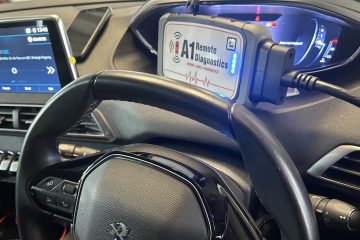A new study has revealed the most common MOT failures in the run up to the festive period, and as the aftermarket endures MOT season.
Insurance broker One Sure Insurance analysed data from the Driver and Vehicle Standards Agency to determine the most common reasons for MOT failure among class 4 vehicles (cars, vans, motorhomes and other small commercial vehicles) in the October-December quarter.
The results show that drivers need to be especially vigilant when monitoring their car at this time of year, as almost a third (29%) of cars fail their winter MOT, with an average of 2.5 issues detected.
Common MOT failures
Ranking first as the most common MOT failures were faults in lamps, reflectors and electrical equipment, which comprised over a quarter of total defects (26.1%). Of the total MOT tests, 11.9% were identified as having at least one failure in this category.
In second was faulty or broken suspension systems, which encompassed almost a fifth (19.2%) of defects. Failures with suspension were encountered in almost one in 10 (9%) tests.
The third are for most common MOT failures was brake issues, accounting for 15.9% of defects and observed in 6.9% of tests. In fourth place was tyre failures, making up 12.3% of defects and present in 6.4% of tests.
Rounding out the top five was visibility issues, which includes anything blocking the windscreen or the driver’s eyeline. These made up 7.9% of total defects and were identified in 4.7% of tests.
In sixth was damage to the vehicle’s body, chassis and structure, which includes the frame, interior and bumpers. These failures accounted for 6.6% of defects and were in 3.7% of tests.
Noise, emissions and leaks followed in seventh, comprising 5.7% of total defects and occurring in 3.3% of tests. In eighth was steering, with issues with the steering wheel and steering system components making up 3.1% of defects and presenting in 1.9% of tests.
Ranking ninth was faults with seat belts and supplementary restraints, such as airbags. These comprised 3.1% of defects and were found in 1.1% of tests.
Completing the top ten common MOT failures was identification of the vehicle, such as license plates and vehicle ID numbers. These were responsible for 0.7% of defects and were detected in 0.4% of tests.
Top ten reasons cars fail their winter MOT
| Rank | Defect category | Overall % of tests | Overall % of defects |
| 1 | Lamps, reflectors and electrical equipment | 11.9% | 26.1% |
| 2 | Suspension | 9.0% | 19.2% |
| 3 | Brakes | 6.9% | 15.9% |
| 4 | Tyres | 6.4% | 12.3% |
| 5 | Visibility | 4.7% | 7.9% |
| 6 | Body, chassis and structure | 3.7% | 6.6% |
| 7 | Noise, emissions and leaks | 3.3% | 5.7% |
| 8 | Steering | 1.9% | 3.1% |
| 9 | Seat belts and supplementary restraint systems | 1.1% | 1.8% |
| 10 | Identification of the vehicle | 0.4% | 0.7% |
Less common causes
On the other end of the spectrum, faults with speedometers and speed limiters were less common MOT failures, with the category comprising 0.01% of total defects. Similarly, they were observed in just 0.1% of tests.
Issues with seatbelt installation were equally rare, consisting of 0.01% of defects and presenting in 0.01% of tests. Failures with road wheels were also relatively uncommon, constituting 0.7% of defects and appearing in 0.4% of tests.
As the automotive aftermarket continues to adapt to an MOT season, brought about by the extensions placed on the annual test during COVID-19 lockdowns, the issue of winter motoring also highlights the lack of preparation by some drivers.
Many will be unlikely to have used lights for an extended period thanks to the longer days of summer, and will not check them prior to their test, leading to MOT failures. The higher rate of failure in this area suggests this to be the case.
Education, therefore, is key, and garages are well placed to ensure they can convey to a driver the importance of regular checks to ensure their vehicle is safe. This is especially the case with suspension and brakes, which were the second and third most common MOT failures, and should these components become dangerous and fail when driving, could lead to catastrophic results.



